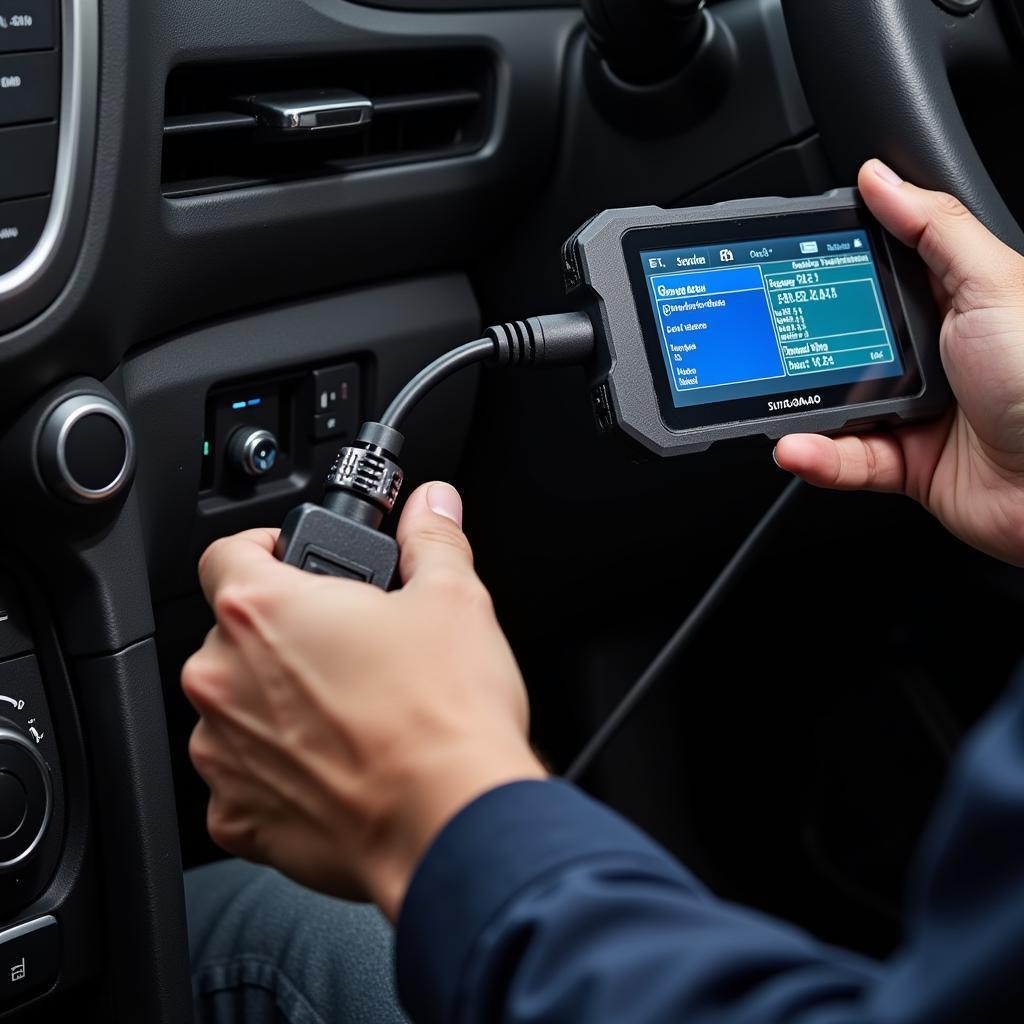Car repair can feel like a mysterious black box, especially if you’re not mechanically inclined. Understanding What Comes In Car Repair, from diagnostic procedures to the actual parts and labor involved, can empower you to make informed decisions and avoid unnecessary expenses. This guide will demystify the car repair process, covering everything from routine maintenance to complex repairs.
Understanding the Car Repair Process
The car repair journey typically begins with a symptom – a strange noise, a warning light, or a noticeable performance issue. Pinpointing the root cause is the first crucial step. Modern vehicles rely heavily on computer diagnostics, using specialized tools to read error codes and analyze system performance. This diagnostic process is essential for identifying the faulty component accurately. After the diagnosis, the mechanic will provide a repair estimate outlining the necessary parts, labor costs, and estimated timeframe. Transparency in this stage is vital for building trust and ensuring you understand the scope of the work involved. Are you looking for car repairs? Check out our resources on finding reliable auto service providers.
Once you authorize the repairs, the mechanic will proceed with the actual work. This could involve anything from replacing worn-out brake pads to rebuilding a transmission. Throughout the process, open communication with your mechanic is key. Don’t hesitate to ask questions and clarify any doubts you may have. Upon completion, the mechanic will explain the repairs performed and provide any necessary recommendations for future maintenance. A final inspection ensures everything is functioning correctly before you hit the road again.
 Car Diagnostic Process in a Modern Auto Repair Shop
Car Diagnostic Process in a Modern Auto Repair Shop
Common Car Repair Components
Understanding the common components involved in car repairs can further demystify the process. These components can range from simple wear-and-tear items to complex electronic systems. Here are some key areas:
Engine System:
- Spark plugs: These ignite the air-fuel mixture in the engine cylinders.
- Filters (oil, air, fuel): These keep contaminants out of critical systems.
- Belts and hoses: These drive various engine accessories and circulate fluids.
Brake System:
- Brake pads and rotors: These provide the friction needed to stop the vehicle.
- Calipers and brake lines: These control the hydraulic pressure applied to the brakes.
Suspension System:
- Shocks and struts: These absorb bumps and vibrations, providing a smooth ride.
- Springs and control arms: These connect the wheels to the vehicle frame and maintain stability.
Electrical System:
- Battery: This provides the electrical power to start the engine and run various systems.
- Alternator: This recharges the battery while the engine is running.
- Sensors and wiring: These monitor various engine parameters and transmit data to the computer.
Knowing how much to save for car repairs can help you budget effectively and avoid financial surprises. Additionally, you might be wondering if personal car repairs are tax deductible.
Choosing the Right Auto Repair Shop
Selecting a reputable and trustworthy auto repair shop is crucial for ensuring quality repairs and avoiding scams. Look for shops with certified technicians, positive customer reviews, and a transparent pricing policy. Don’t hesitate to ask for recommendations from friends, family, or online communities. A good mechanic will clearly explain the necessary repairs and provide a detailed estimate before starting any work. They will also answer your questions patiently and address any concerns you may have. Learning how to repair a new car or how to repair a car ECU PDF can provide further insights into the complexities of modern vehicles.
Conclusion
Understanding what comes in car repair empowers you to make informed decisions and maintain your vehicle effectively. From the initial diagnostic process to the final inspection, knowing the steps involved and the common components requiring attention can save you time, money, and stress. Remember to choose a reputable auto repair shop and communicate openly with your mechanic to ensure a smooth and transparent repair experience.
FAQ
- What is the first step in car repair? Diagnosis is the first step, identifying the root cause of the problem.
- Why are computer diagnostics important? They accurately pinpoint faulty components in modern vehicles.
- What should a repair estimate include? Parts, labor costs, and estimated timeframe.
- Why is communication with the mechanic important? It ensures transparency and addresses any concerns.
- How can I choose a reputable auto repair shop? Look for certifications, positive reviews, and transparent pricing.
- What are some common car repair components? Spark plugs, filters, brakes, suspension parts, and electrical components.
- What should I do after the repair is complete? Review the work done and ensure everything is functioning correctly.
Need assistance? Contact us via WhatsApp: +1(641)206-8880, or Email: [email protected]. Our customer support team is available 24/7.

Leave a Reply